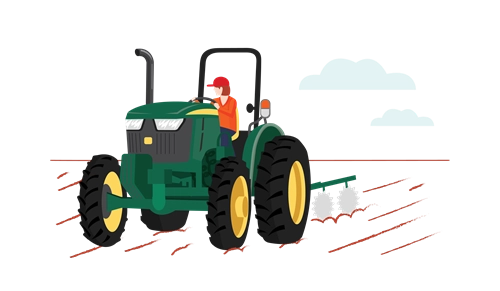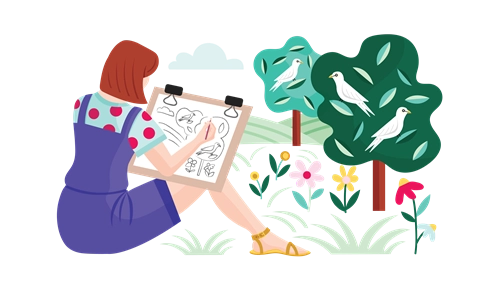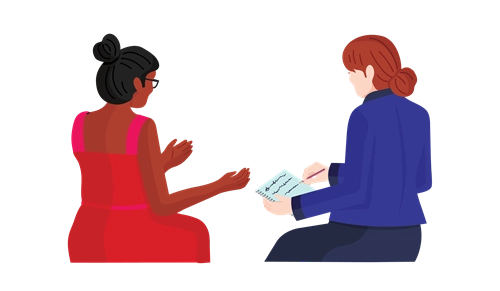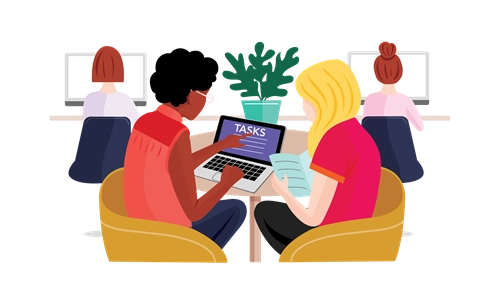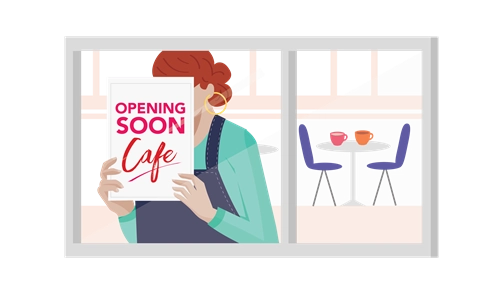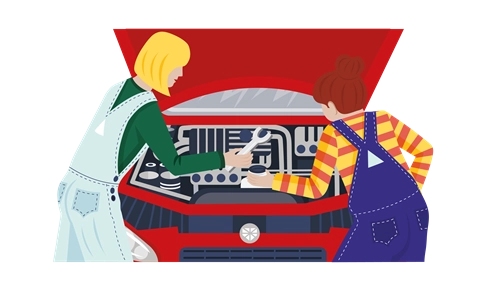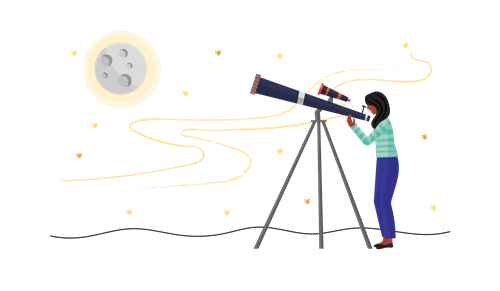-
Curriculum alignment
Design and Technologies
AC9TDE6K01 – Explain how people in design and technologies occupations consider competing factors including sustainability in the design of products, services and environments (
AC9TDE6K05 – Explain how characteristics and properties of materials, systems, components, tools and equipment affect their use when producing designed solutions
AC9TDE6P01 – Investigate needs or opportunities for designing, and the materials, components, tools, equipment and processes needed to create designed solutions
AC9TDE6P02 – Generate, iterate and communicate design ideas, decisions and processes using technical terms and graphical representation techniques, including using digital tools
AC9TDE6P03 – Select and use suitable materials, components, tools, equipment and techniques to safely make designed solutions
AC9TDE6P04 – Negotiate design criteria including sustainability to evaluate design ideas, processes and solutions
AC9TDE6P05 – Develop project plans that include consideration of resources to individually and collaboratively make designed solutions
Mathematics
AC9M5M01 – Choose appropriate metric units when measuring the length, mass and capacity of objects; use smaller units or a combination of units to obtain a more accurate measure
- S
- T
- E
- M
Engineers are problem solvers
Years 5 and 6
Learning hook
Students may not realise when they are thinking as engineers. Without labelling the activity, challenge students to build the tallest free-standing structure they can out of just three pieces of scrap A4 paper and masking tape.
Have students work in teams of two and give them 15 minutes to complete their tower.
When the towers are complete, explore with the students the fairest way to measure the height of the structures and conduct a gallery walk so that students can view the different approaches taken to solving the problem.
Students can share what they think worked well with their designs, and consider what they might do differently next time.
Girls in focus
Some girls may be reluctant to get hands-on and may ‘sit back’ during this task. Consider grouping students with similar construction abilities to encourage equal involvement in the task, or make a rule that each member of the team must take an active role in building part of the tower.
Learning input
Explain to students that they were being engineers. Engineers are creative problem solvers who use their science, mathematics and technological understandings to design solutions.
Ask students what they know about engineering, and if they know any engineers. Capture the different types of engineering shared by students.
As a class, watch the video What is Engineering from the University of Newcastle to explore the role of engineering in our everyday lives.
Girls in focus
Diverse and relatable role models are important for supporting girls to self-identify as ‘STEM people’. Engineering is such a diverse field, students may not recognise that their parents or close family members are actually engineers. Consider checking in with families to identify anyone with ties to engineering, and invite those people to share their career with the class.
Learning construction
Part A
Explain to students that we live in an engineered world – the products of engineering are all around us! Invite them to complete an engineering scavenger hunt around the school grounds by adding photos to the Scavenger Hunt template.
Part B
Explain to students that engineers design objects to solve particular problems. We become so used to having certain objects in our lives that we often forget that they have been actively designed to solve particular problems well.
As a class, think of some common objects and see if you can describe the problem that object solves. For example, start with a tap and a coffee mug.
Engineered objects solve problems

Image credit: Wikimedia Commons/Maksym Kozlenko, CC BY SA
- Releases water in a predicable stream
- Can be turned off and on
- Doesn’t leak
- Can have a hose screwed to it

Image credit: Wikimedia Commons/Niki Odolphie, CC BY
- Holds liquid
- Stops your hands from getting hot
- Smooth against your lips
- Easy to clean
Now ask students to create a puzzle for their peers where they have to match the object with the problem it solves. Give students a few examples to warm them up. For example:
|
Object |
Problem it solves |
|
Paper book |
A light-weight means to record ideas and transport them. |
|
Watch |
An easily transportable way to tell what time it is. |
|
Door |
A way to let people enter or leave, but shut out noise or weather. |
Students can write the object names on pieces of paper, then the problems/uses on other pieces of paper and challenge other students to match the pairs.
Part C
Students often think that great ideas just happen, and don’t appreciate the role or value of the design process. Introduce students to the engineering design cycle and give them an opportunity to experience how using this process can improve their engineered solutions.
The engineer design process
Talk through each stage of the engineering design process and have students reflect on their experiences building their paper towers. Which aspects of the engineering design process did they engage with? What would they do differently in order to achieve a better solution?
Step students through the engineering design process for building their tower:
DEFINE – Build the tallest free-standing structure we can using just paper and masking tape.
IDENTIFY – We can only use three sheets of paper and masking tape; we need to complete it in x timeframe.
BRAINSTORM – Have students sketch multiple solutions for the problem.
SELECT – In their groups of two, have students select the most promising solution.
PROTOTYPE – Students build their tower.
TEST – Students measure the height of their tower.
ITERATE – Students see if they can increase the height of their tower by changing aspects of the design.
COMMUNICATE – Students share their final tower with the class.
Paper tower design
Students can capture their process by taking photos and adding the photos to this template:
Girls in focus
Sometimes girls can have a fixed mindset when it comes to STEM, particularly thinking there is a single right answer or a perfect solution. Support girls to embrace a growth mindset by valuing their efforts in the Brainstorm and Iterate phases by noticing their creativity, the flexibility of their problem-solving and their persistence. You could even take photos of girls and their notebooks, screens or built solutions during each phase of the engineering design cycle to augment your classroom display.
As a group, compare students’ first and then final solutions. What changed? Which aspects of the engineering design process did they find particularly valuable?
Support students to refer to the engineering design process when they engage with other lessons that require them to think like engineers, such as:
-
Rubric
Assessment
Criteria
Beginning
Achieved
Exceeded
Brainstorming
Identified a single solution to the problem.
Identified several solutions to the problem.
Identified several solutions to the problem that approached the problem in quite different ways.
Prototyping
Built a prototype.
Built a prototype that showed some similarities to the planned solution.
Built a prototype that used the core principles of the planned solution.
Testing
Measured the height of the tower.
Selected units of measurement to obtain an accurate height.
Selected units of measurement to obtain an accurate height and considered fairness and repeatability when measuring.
Iterating
Built another prototype.
Demonstrated reflection and consideration before and between development of further iterations.
Demonstrated careful evaluation of the first prototype and actioned areas for improvement in development of further iterations.
Group work
Participated in the group discussion and activity.
Participated in discussion and was hands-on in each phase of the engineering design cycle.
Participated and supported others’ participation in discussion and hands-on aspects of each phase of the engineering design cycle.


